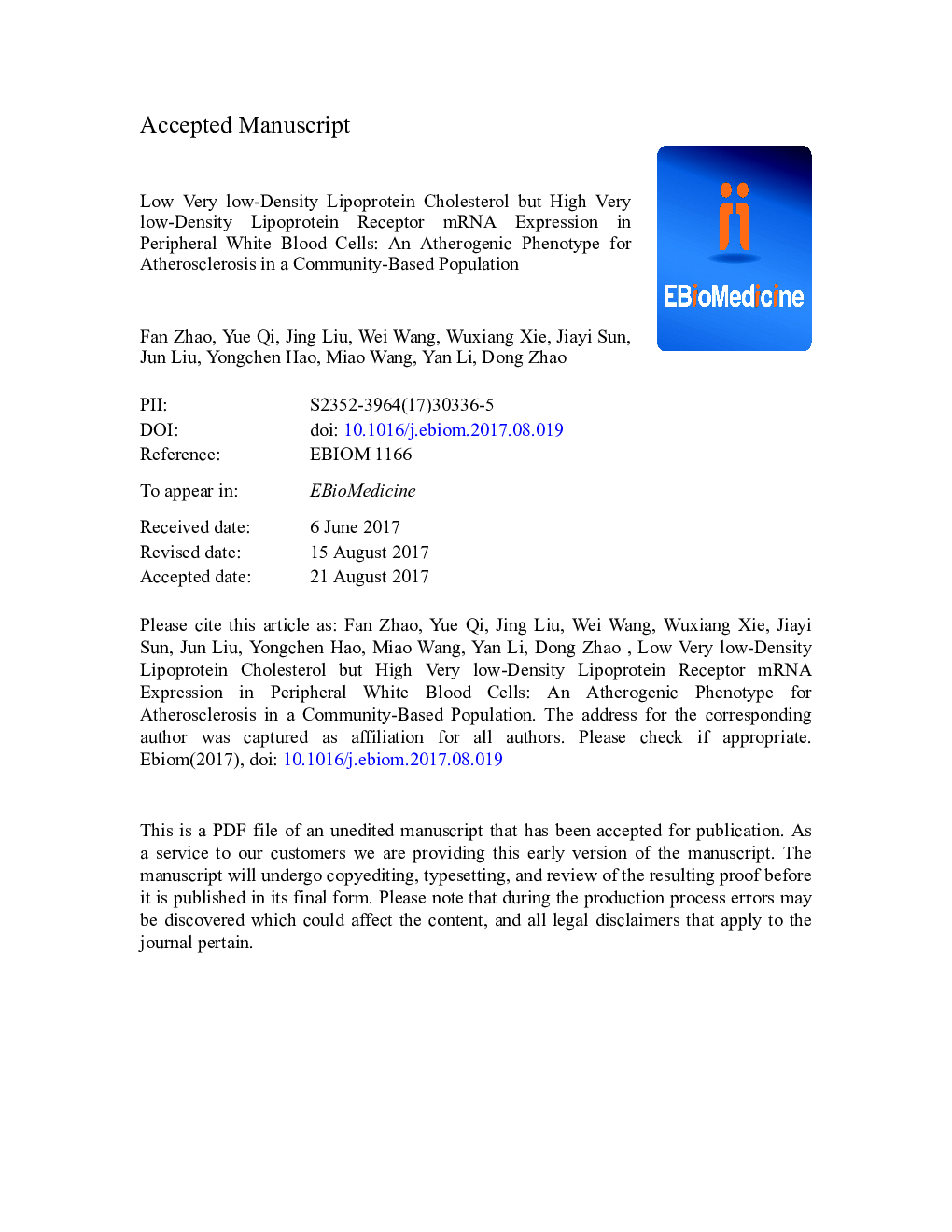| Article ID | Journal | Published Year | Pages | File Type |
|---|---|---|---|---|
| 8437868 | EBioMedicine | 2017 | 32 Pages |
Abstract
Very low-density lipoprotein cholesterol (VLDL-C), via binding very low-density lipoprotein receptor (VLDLR), can induce the development of atherosclerosis. Besides monocytes, VLDLR expression is detected in various peripheral white blood cells (WBCs), yet its underlying role remains unclear. We thereby aimed to test the hypothesis that VLDLR in all types of peripheral WBCs may be involved in the association between VLDL-C and atherosclerosis. VLDLR mRNA expression in peripheral WBC and plasma VLDL-C levels were measured in 747 participants from a community-based study. Plaque prevalence and total plaque area (TPA) were used to evaluate the burden of carotid atherosclerosis. VLDL-C was positively associated with atherosclerosis risk, whereas this association was modified by VLDLR mRNA level. In participants with the lowest VLDL-C but the highest VLDLR mRNA expression, the risk for plaque prevalence unexpectedly was the highest. This association was also observed for TPA. Moreover, this association remained unchanged after adjusting for WBC or monocytes. Our findings described an atherogenic phenotype characterized by low VLDL-C but high VLDLR mRNA expression in peripheral WBCs, which suggested that VLDLR in all types of peripheral WBCs may be involved in lipid deposition, and VLDL-C and VLDLR may co-determine the development of atherosclerosis.
Keywords
Related Topics
Life Sciences
Biochemistry, Genetics and Molecular Biology
Cancer Research
Authors
Fan Zhao, Yue Qi, Jing Liu, Wei Wang, Wuxiang Xie, Jiayi Sun, Jun Liu, Yongchen Hao, Miao Wang, Yan Li, Dong Zhao,
